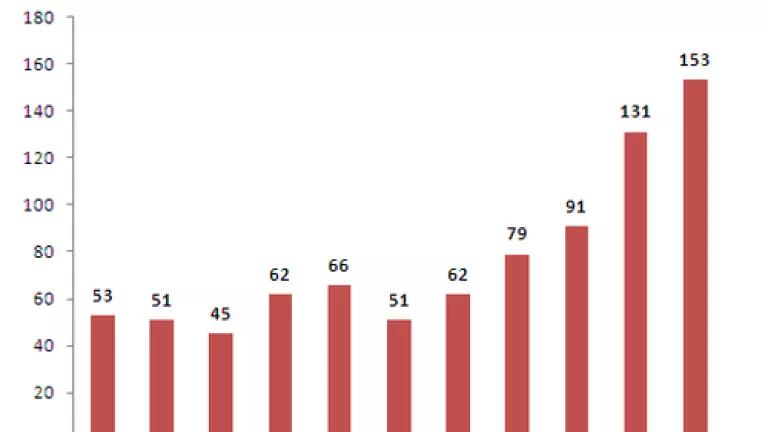
Today, the U.S. Environmental Protection Agency and Department of Transportation announced new, improved fuel economy and pollution labels for new cars. These labels, while not perfect, are an improvement over the current obsolete versions. These revised labels are good, but stronger standards are the best, most proven way to expand consumer choice for cleaner, more efficient cars.
Thanks to President Obama’s decision in 2009 to strengthen pollution and fuel efficiency standards for model years 2012 to 2016, there are more choices of fuel efficient cars than ever. In just five years, the number of models meeting or exceeding the 2016 fuel economy standard of 34.1 mpg has tripled, from 50 to over 150. The best way to ensure consumers will continue to have more choices in future is to adopt strong standards for model years 2017 to 2025.
The new label can be found here. Key improvements are addition of five year fuel savings (big and bold); absolute ratings for global warming pollution, MPG and smog; and additional information on the web regarding powerplant emissions associated with electric vehicle charging. As my colleague Luke Tonachel points out, "the new label should enable consumers to more easily find a vehicle that meets their needs and causes less pain at the pump."
The best action the President can take to expand consumer choice would be strong standards for model years 2017 to 2025. The President has the opportunity to raise standards in this next round to as high as 62 mpg by 2025. But the automakers would like to see a weak standard, as low as 47 mpg. This weak standard means more oil dependency, more pollution, and less choices at the showroom compared to the strongest standard.
In fact, consumers are already reaping the benefits of the President’s 2009 decision to strengthen 2012 to 2016 standards to 34.1 mpg and 250 g/mile of carbon pollution. According to my analysis of EPA data, the number of distinct vehicle models that are certified that meet or exceed the 2016 fleet average has tripled in just five years.
- In model year 2011, there are 153 models that exceed 34.1 mpg on their lab or certification test cycle. These include two new “crossover” vehicles from GM, the Equinox and the Terrain.
- In model year 2001 with fuel economy standards stagnant for over a decade, there were 53 vehicle models that met or exceeded 34.1 mpg.
- In model year 2006 with fuel economy standards still stagnant, the number of vehicle actually dropped to just 51 models that met or exceeded 34.1 mpg.
So when it comes to expanding consumer choice, improved labels are good, but stronger standards are even better. Strong standards means more consumer choice.
